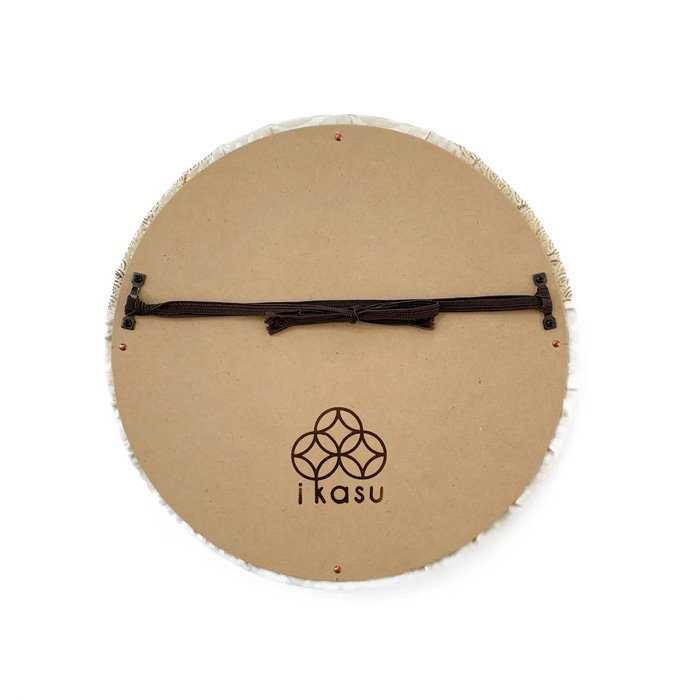Follow the Crane ~Love~
Size
diameter approx. 30cm x 2cm (2 items)
Materials
silk (outside-layer) , wooden frame, cotton linen canvas (under-layer)
About this canvas
The crane in the canvas appears to be facing the sun, but upon closer examination, you can also discern a large crane intricately woven into the sun itself.
Size
diameter approx. 30cm x 2cm (2 items)
Materials
silk (outside-layer) , wooden frame, cotton linen canvas (under-layer)
About this canvas
The crane in the canvas appears to be facing the sun, but upon closer examination, you can also discern a large crane intricately woven into the sun itself.
Size
diameter approx. 30cm x 2cm (2 items)
Materials
silk (outside-layer) , wooden frame, cotton linen canvas (under-layer)
About this canvas
The crane in the canvas appears to be facing the sun, but upon closer examination, you can also discern a large crane intricately woven into the sun itself.
Period / History
The kimono shown on the left screen was made and worn during the late Showa period (1960-80s), while the naga-juban shown on the right screen was made and worn during the Taisho period (1910s).
Explanation and Meaning of the Pattern and Colors
The crane is often associated with "longevity" in Japanese culture, as reflected in the saying, "A crane lives for a thousand years, a turtle for ten thousand years. Cranes are also a symbol of "marital bliss," as they are believed to mate for life, signifying a harmonious and lasting partnership. This symbolism is often incorporated into weddings and other celebratory occasions.
The deep scarlet or rich red color has long been associated with the power to "ward off evil" and is believed to bring good fortune. During the Heian period (794-1185), this color was used primarily for sacred structures and ritual objects that held significant spiritual value.
Due to the restrictions placed on ordinary people, who were forbidden to wear red kimonos, this color became highly coveted and held a special place in Japanese culture.
Characteristics of the fabric
The screen on the right is a naga-juban underkimono designed for furisode (long-sleeved kimono), with a large woven pattern of cranes and clouds in an auspicious design against a fabric background. The fabric has a soft luster and a soft, smooth texture.
In the canvas on the left, the ground pattern is intricately woven with larger dots in rows that evoke the appearance of snow. While "arare," a traditional Japanese pattern of fine polka dots, is commonly found on kimonos, this particular kimono stands out for its larger, more prominent polka dots, which make it look charming and cute.
A special feature of this kimono is the unique dyeing technique used for the cranes, which are presented in the form of line drawings. The white areas, which resemble red and white dyeing, are dyed with a combination of gold and mud, resulting in a sumptuous, shimmering effect when exposed to light.
Decoration Tips
Canvas can be displayed on a table, wall, etc. Hanging on a wall requires hooks, tacks or nails. It can also be displayed on an easel. Ideal for a room makeover, housewarming gift, gift or souvenir for a loved one.
Caution
All pieces are made from real kimonos, antiques and vintage pieces. For this reason, the fabric may have traces of long-term use and minor fabric damage. If there are scratches or stains, we always add a photo of the area on the item page, so please check before you buy. Regarding precaution, cancellation and refund policy, please refer to the refund policy in the footer section of the site for information.
The last images in the gallery are the images of the back of the canvas, the mounts and the packaging.




















